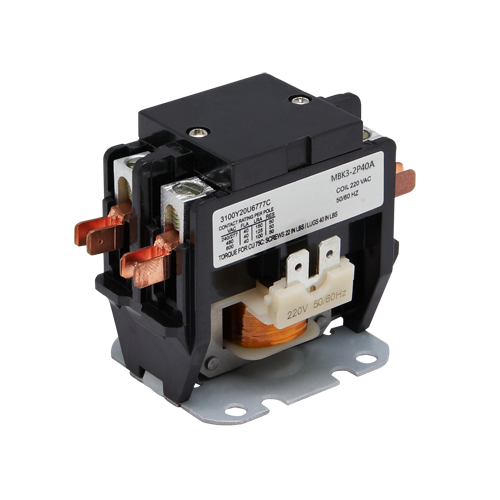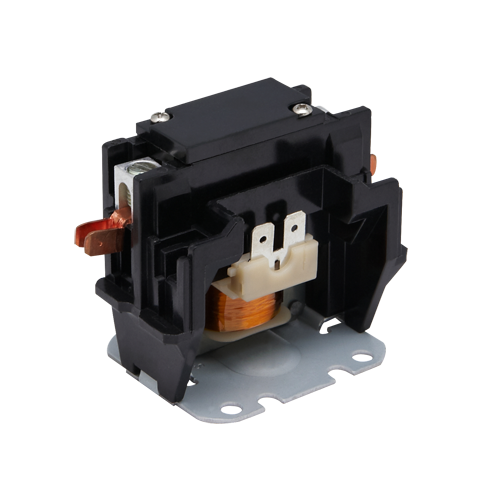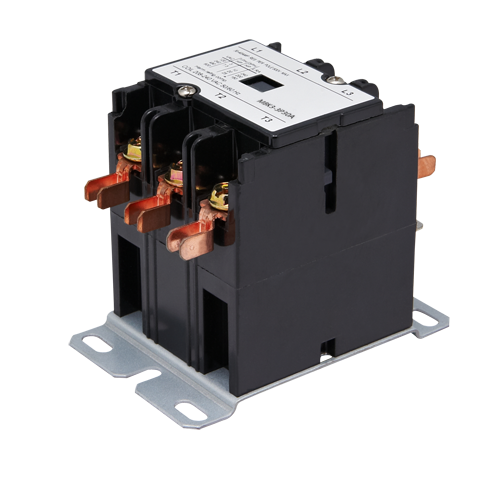The electromagnetic outside ac unit contactor has three poles, a NO main contact, and air as the arc extinguishing medium. Coil, short-circuit ring, moving contact, static contact, auxiliary NO contact, auxiliary NC contact, pressure spring sheet, response spring, buffer spring, and arc extinguishing device are some of its components. There are original components on the cover. Below is shown the appearance structure of the common AC contactor in the figure:

System of electromagnetic waves Coil, a static iron core, and a moving iron core are all part of it.
Contact system: It has both primary and secondary contacts. The main contact connects and disconnects the main circuit while allowing a greater current to flow through. One of the technical characteristics of the contactor is often the maximum current permitted by the primary contact (also known as the rated current). When in operation, auxiliary contacts are typically wired to the control circuit and are only permitted to carry very tiny currents.
The auxiliary connections on AC contactors can either be NO or NC contacts, whereas the main contacts are often NO contacts. Four auxiliary contacts are present in a contactor with a lesser rated current, whereas six auxiliary contacts are present in a carrier ac contactor with a greater rated current.

The NO contact designates that the coil’s moving and static contacts are open while it is not activated and that the coil is closed when it is energized.NC contact denotes that the moving and static contacts are closed when the coil is not energized, and they are disconnected when the coil is energized.
When the primary contact is severed, the arc extinguishing device’s job is to swiftly stop the arc. As a result, arc extinguishing mechanisms are often present on AC contactors. Arc extinguishing grids are frequently utilized with AC contactors of greater capacity.
The illustration below depicts the basic operational structure of the aircon contactor. The armature is drawn to move downward when the coil is ignited, opening the usually closed contact and closing the normally open contact. The magnetic force is lost when the coil is de-energized. The response spring causes the armature to return to its initial position and the contact to take on its initial condition.
Follow us on Facebook







